John and Carol Babina worked at WHUS, the radio station at the University of Connecticut in the early 1960s, and their love of radio led to a 57-year-marriage, the birth of one son and to many new radio stations and stronger signals throughout the state.
The Shelton couple, who had lived in Monroe for decades and played key roles in the founding of WMNR Fine Arts Radio, which was originally housed inside Masuk High School, was recently inducted into the Connecticut Broadcasters Association Hall of Fame.
John, now 80, joined his college radio station in 1961 and Carol, 79, arrived one year later.
“We never crossed paths,” John recalled. “We knew who people at the station were. It wasn’t until my junior year and we immediately clicked. Carol became station manager — for the first time, women started to appear in radio. She was the first in Connecticut to be general manager of a radio station.”
They were among the new class of inductees attending an awards dinner at the Aqua Turf Club in Plantsville on Oct. 15. Family, friends and colleagues were among the close to 300 guests, as well as dignitaries like U.S. Sen. Richard Blumenthal, D-Connecticut.
“It was a good evening,” Carol said during a recent interview at the Babinas’ home. “It was totally unexpected. It was a very nice event, but I never expected anything like that. That wasn’t what we were involved in radio for, but it was nice to be recognized.”
Kurt Anderson, general manager of WMNR and a longtime friend of the couple, introduced them at the dinner.

“After having met at UConn’s WHUS radio station John and Carol worked with noncommercial radio stations for more than six decades,” Anderson said. “They founded WMNR, and founded and mentored high school and college radio stations throughout the state. They were instrumental in the technical upgrades and fundraising that allowed WMNR to become affiliated with the Corporation for Public Broadcasting. Thank you John and Carol Babina.”
The early days
John Babina’s father started working at a General Electric plant packaging radios at age 18.
“For a couple of years he had people working for him with patents and radar and TV,” Babina recalled. “He had equipment on a table at home. We had our first TV in 1941. I wasn’t born yet.”
“We were the only ones in Success Park with a television set,” he said of his childhood. “I was already watching television at 3-4 years old. I was intrigued by the specials.”
“Meet the Press” is the longest running show in TV history, Babina said, adding, “I saw the first show.”
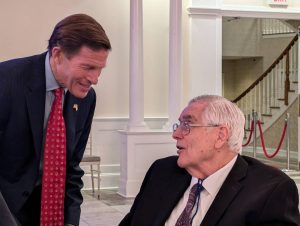
Of another popular TV show, Babina said “The Ed Sullivan Show” was originally called, “The Toast of the Town”.
He got into electronics when he was older, so his father brought him along on repair calls. “He was a self-taught,” Babina said of his father.
Babina said he was fascinated with radio and TV and, because UConn had a radio station, that’s the interest he ended up pursuing.
“Because of the exposure in my childhood, I immediately gravitated toward radio in college,” he said.
“I shied away from public speaking,” Carol Babina said of her own experience in radio.
“She wanted to sharpen her public speaking ability,” John said.
Carol said her involvement with the radio station was convenient due to its close proximity to her dorm and classes, adding her interest grew.
“She was No. 1 in pharmacy for five years when this was going on,” John said.
The Babinas got married in 1967 and moved to Monroe in 1970, where they raised their son, John.
“At a town meeting I said, ‘gee, Monroe has no radio station and neither did the towns touching Monroe. It would be neat to have a radio station.'”
Starting WMNR
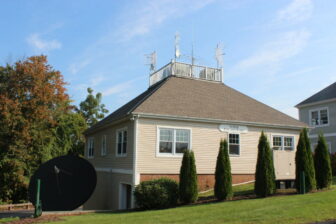
John said he believed a noncommercial entity had to be behind them for the radio station to become a reality.
“I went to a Board of Education meeting to get a noncommercial entity,” he recalled. “They voted yes, but asked who would pay for this. I said, ‘don’t worry. We’ll raise the funds.'”
To make the dream possible, the Babinas had led volunteers in a massive fundraising effort.
John drove his Ford throughout the town and Masuk students would hop out of his car to sell WMNR bumper stickers door-to-door. They raised over $1,000 dollars and the Mothers Club matched every donation.
Overall, volunteers raised $8,000 in cash donations and $11,000 in used equipment and in-kind services to get WMNR off the ground and on the air. It acquired its first FCC license on November 30, 1973.
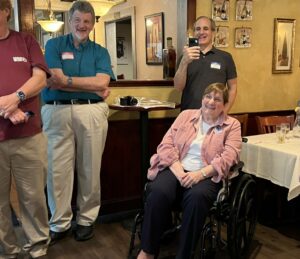
Students helped erect a tower atop a hill by Stepney Elementary School and to build the station, originally housed at Masuk before moving to its current location at Lantern Ridge on Main Street when the school building was renovated in 2003.
David Bjorklund, a local surveyor, did all of the surveying for the tower behind Stepney Elementary pro-bono, according to John.
John said the late Ralph Winquist, a registered engineer, master electrician, plumber and tower rigger, offered pro-bono assistance to numerous noncommercial radio stations, including WMNR. He was a chief engineer at WICC at the time.
John recalled how creative they got to make things work. One staffer took a radio from a car and made it into an emergency broadcast system (EBS), so whenever CBS did its EBS test, it would alert WMNR, so the station knew they had to do theirs.
“We got a school clock for the studio from a railroad salvage yard,” John said.
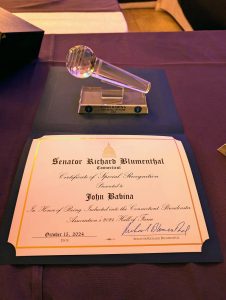 He also recalled when a radio station over the line in New York, damaged in a fire, sold its control board to WMNR for $75.
He also recalled when a radio station over the line in New York, damaged in a fire, sold its control board to WMNR for $75.
“We needed glass windows between the studios. ‘Where can I get double glass cheaply?'” John said of another problem to solve. “Stevenson Lumber was good to WMNR.”
John asked if the business had sliding glass doors and if any were cracked and could not be sold. He took a set, discarded the broken door and used the good double-glass door for the studio.
In 1982, WMNR changed its focus from a high school radio station to a station broadcasting classical music to listeners in Connecticut and New York, sticking with that format for over 40 years.
Today, WMNR can be live streamed from anywhere in the world and its reach extends to approximately 32 states with a signal that can reach 1.2 million people.
The dial points are spread out over Fairfield, New Haven and Litchfield counties, the eastern Connecticut shoreline, central Connecticut, Westchester County and Long Island.
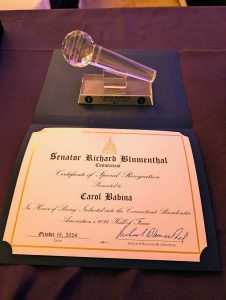 Carol Babina is credited with helping WMNR raise over $19 million in donations over its history.
Carol Babina is credited with helping WMNR raise over $19 million in donations over its history.
John said programming is key to a successful radio station, rather than how it is delivered. He said listeners like the WMNR formula.
“Our broadcasters are very knowledgable about the music,” Carol said. “Our listeners appreciate the personalization of the program. It has a friendly approach to it, rather than just naming the piece. We appreciate being able to work in public radio and with WMNR especially. We have always maintained its original intent to play classical and fine arts music.”
Stronger signals
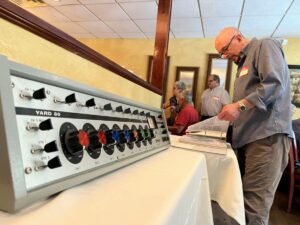
In addition to leading the effort to start WMNR, the Babinas were instrumental in increasing the signals of the Monroe station and others throughout the state over the years.
“When we started, Carol and I were still helping out at WPKN, a 10-watt station,” John said. “We found out the FCC was going to grandfather that size and not allow you to expand. The University of Bridgeport had to raise its power to at least 100 watts, not to be grandfathered.”
Carol helped with the fundraising, which was done through the student council.
“We were building new studios,” John said. “Carol built mock-ups out of cardboard. We would say, ‘this is how we would do it with wood.'”
John did trenching in floors for the wiring, handling the technical side, while his wife handled the people side. John said he designed snap panels that came off with the push of a button, providing easy access to equipment for maintenance and repairs.
He helped WPKN increase to 2,000 watts and said the radio station now has 10,000 watts.
The Babinas sent a letter to UConn telling the university it would be locked in at 10 watts if it did not increase it soon. “We worked with Ralph and got it to its current power,” John said of Ralph Winquest, who helped to expand the bandwidth for stations throughout the state.
“Fairfield University had a 10-watt station and we told them what would happen if they didn’t expand,” he said, adding the university increased its signal to 100 watts.
John said they helped to get WWPT on the air at 100 watts in Westport, as well as stations in South Kent and WLNV in Shelton.
“We gave them extra used equipment to get on the air, but they didn’t have enough staffing to keep it going and sold it to us,” John said of the Shelton station. “We used it to repeat WMNR’s audio. We have 15 or 16 transfers now.”
The Babinas are still active in radio.
“We got a call from UConn to help with their radio history, using an audio link on the internet where I chronicle the history,” John said of a current project.
“Radio began around 100 years ago and John and Carol Babina started WMNR over 50 years ago,” Anderson said during their introduction at the Hall of Fame dinner. “It isn’t often that station founders are still with us, but we are here today to honor John and Carol Babina and all they have done to start WMNR and work so hard to have it prosper in providing a noncommercial radio service to so much of Connecticut.”
All respectful comments with the commenter’s first and last name are welcome.

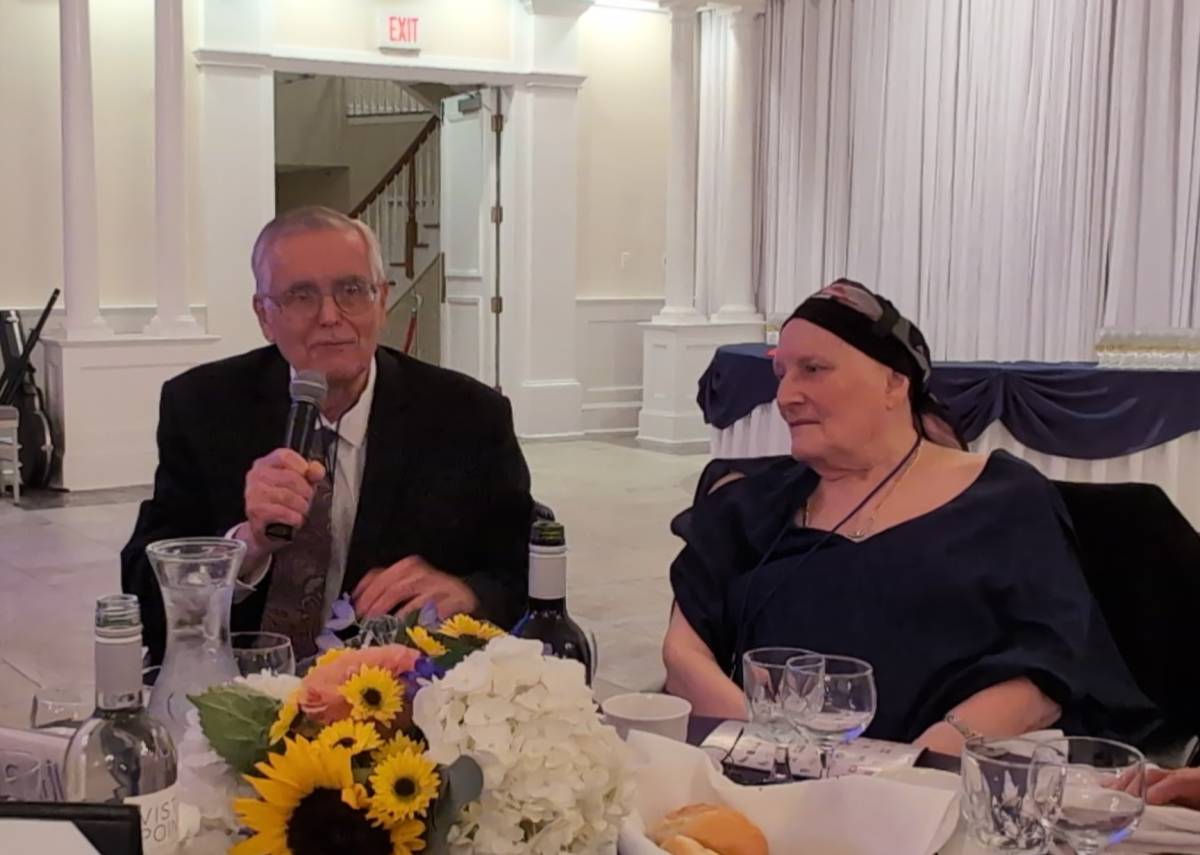

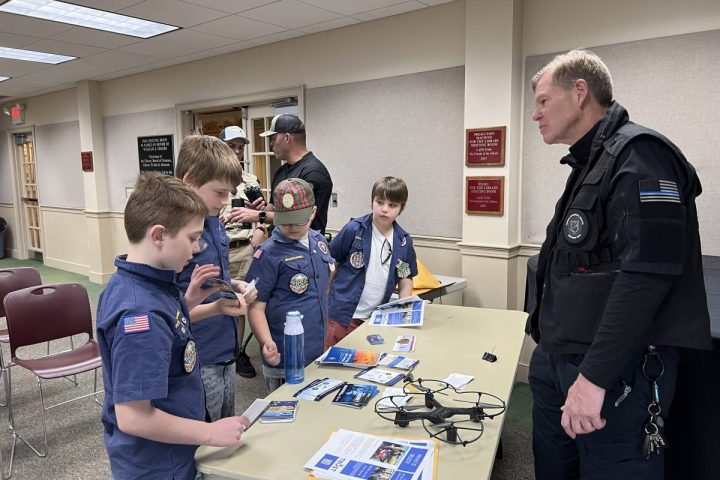
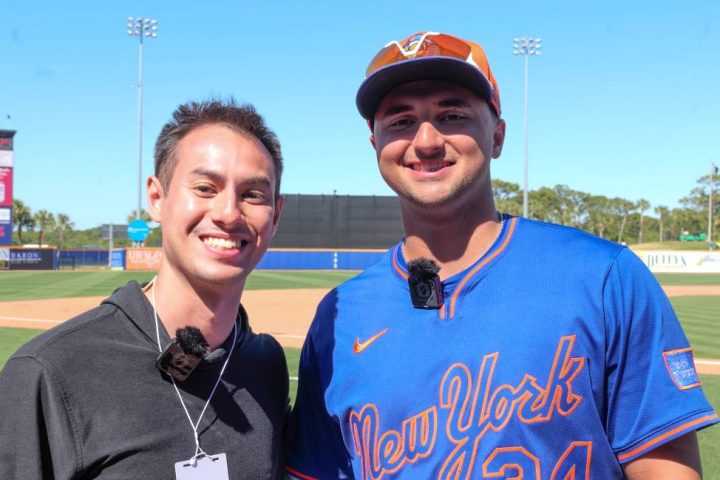


Congratulations to John and Carol. True trailblazers and always so humble and caring. God Bless them